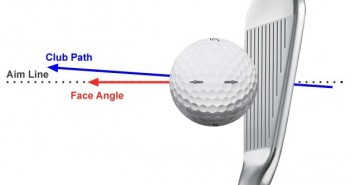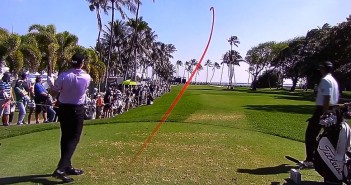Most golfers know that their shots will go further on a warmer day, but why does this happen?
Coefficient of Restitution (COR)
Firstly, the ball’s initial speed off the club face will increase.
At impact, the golf ball will compress against the club face and then regain its shape as it “springs” off the club face.
Some energy will always be lost during this compression and expansion, in the form of heat and sound.
The impact between the club face and the ball will become more “elastic” at as temperature increases, leading to a more efficient transfer of energy to the golf ball and thus a higher ball speed.
The coefficient of restitution (COR) is the ratio of the relative speeds of the club head and the golf ball before and after after impact. COR will increase with a rise in ball temperature.

In cold weather, keep your golf ball in your trouser pocket from green to tee in order to warm it up, it will then fly further on your tee shot.
The USGA and The R&A have limited golf clubs and balls to a maximum COR of 0.83.
Note that if you are hitting the common high durability range balls, the effective COR can easily be as low as 0.73, which will reduce the maximum ball speeds that you can produce by about 6%.
Air Density
Secondly, as air temperature increases the molecules in the air will have more kinetic energy, this will cause the air to expand, resulting in lower air density because there are fewer molecules in a given volume (lower mass per unit volume).
Where ρ is the density of the air, P is the air pressure, R is the gas constant for dry air, and T is the absolute temperature. So if temperature (T) increases while pressure (P) stays constant, then air density (ρ) will decrease.
Lower air density results in less drag force on the golf ball as it flies through the air.
This reduced drag is partially offset, however, by reduced lift. Lower air density will reduce the lifting force on the ball, and thus reduce the carry distance of the shot.
The Result
The result is that higher temperatures will increase shot distance, but the precise effect will be dependent on club head speed, launch angle and spin rate.
As a rough guide, golf shots will fly approximately 5-6% further at 100°F (37.8°C) than at freezing point.
If the temperature where you play varies significantly during the day, then you will need to factor this into your club selection – each 12°F (6.7°C) drop in temperature will result in a 1% reduction in carry distance.
If you have any questions or comments about this or other articles on Golf Loopy, please send us an email.





